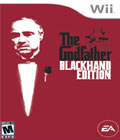Q: Before starting a project of this size, there had to be a ton of research. Tell us the steps you took to re-create 1945 Little Italy.
SS: In recreating our 1945 Little Italy for The Godfather, it started with quite a bit of research. We looked at aerial photos of New York City from both contemporary and period books and maps to get a sense of the scale of the area. We also thoroughly researched the different buildings in the region, specifically landmark buildings such as the old police headquarters and the general architecture of the neighborhood. Little Italy consists of many six to eight story tenement buildings. We also looked at the different types of streets in the area, noting that many of the streets of Little Italy are rather narrow. Yet the area is surrounded on all sides by wide boulevards such as Canal Street, the Bowery, East Houston St. and Broadway. A group of us traveled to New York City to visit the different areas we wanted to develop for the game. We visited Little Italy and walked through the streets and environs to get a real sense of the area. The key in designing Little Italy is not to recreate every street, but to define its character. Thus, we opted to reduce the number of streets for our game world while retaining the locations of key landmark buildings and key streets such as Broadway and Canal. Thus we developed a scaled version of Little Italy which proportionally feels like the real area.
Q: What makes the Little Italy neighborhood unique in this game? How is the neighborhood 'planned' differently than the others?
SS: In The Godfather The Game, Little Italy conveys the sense of a dense urban neighborhood yet also an intimate urban neighborhood in the midst of New York City. The city blocks of Little Italy are different than those of the other neighborhoods, not quite like the square city blocks of Brooklyn but smaller than the longer city blocks of Midtown and Hell’s Kitchen. Its compact in size, with a neighborhood church, cops walking the beat, and a lot of walk up shops and businesses along the streets surrounded and separated by major traffic arteries crossing the area.
Q: How do the neighborhood differences affect gameplay?
SS: Little Italy is the one neighborhood that the player can transit around without necessarily entering into it. Yet when transiting the streets of Little Italy one gets enmeshed into the neighborhood as one enters further into it. It’s easy to get into it and tricky to exit. It makes for a fun neighborhood to conduct a high speed chase through, never quite knowing at the last second which way to turn. Little Italy also has a lot of alleys. These are good secondary routes to transit the neighborhoods as well as ideal locations to go looking for a black market seller. Also, a major part of the Little Italy area lies to its south of the main core near the Civic Center. This is the location for the government buildings of New York City such as the city hall and courthouses. There are some business venues along Bowery and Broadway as well as a number of city parks and side streets where one can find more black market sellers or, if you're not careful, a rival family ambush.
Q: What key movie and game locales are found in Little Italy?
SS: The player begins in Little Italy in one of the alleys soon to meet his mentor Luca Brasi. Many of the initial missions take place in this neighborhood as well, and so after a bit the player gets pretty familiar with the area. Like the film, the hit on Don Corleone in the game occurs in the heart of Little Italy on Mott Street, right outside of the Corleone family business, Genco Olive Oil.
Q: What is your favorite location in Little Italy and why?
SS: My favorite area in Little Italy is a remote stretch of Lafayette Street. This is a confined area where the player can get a good four way gun battle going with up to three other groups of enemy characters. Also, some of the player’s mobster gun men allies who hang out in the area can join into the fray. It’s possible to get these groups fighting amongst themselves as well, in which case the player can more easily try to make an escape if things start going badly. You just have to know how to aggravate all the different AI characters to get the action rolling.
More articles about The Godfather











 Featuring non-linear action-adventure gameplay, The Godfather will offer gamers countless choices for solving the family's problems with brutal violence, skillful diplomacy, or a cunning mixture of both. From mob hits and bank heists to drive-bys and extortion, step deep inside the world of The Godfather where intimidation and negotiation are your tickets to the top. Players will use their powers of loyalty and fear to earn respect through interactions with characters in the world. Decisions made by the player in the game will have lasting consequences, just as it was in the mob underworld featured in The Godfather fiction.
Featuring non-linear action-adventure gameplay, The Godfather will offer gamers countless choices for solving the family's problems with brutal violence, skillful diplomacy, or a cunning mixture of both. From mob hits and bank heists to drive-bys and extortion, step deep inside the world of The Godfather where intimidation and negotiation are your tickets to the top. Players will use their powers of loyalty and fear to earn respect through interactions with characters in the world. Decisions made by the player in the game will have lasting consequences, just as it was in the mob underworld featured in The Godfather fiction.






















